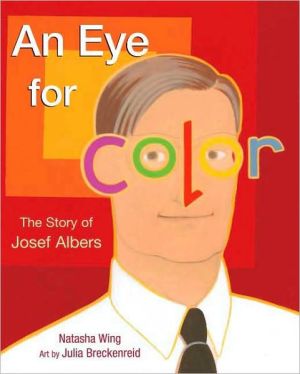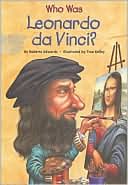An Eye for Color: The Story of Josef Albers
As a child, Josef Albers loved to watch his handyman father paint houses.When Josef grew up and became an artist, he reduced each image to its simplest shapes, breaking it down into blocks of color.\ He made an incredible discovery: he could alter the entire mood of a painting just by changing the way he combined the colors! Josef spent his entire life studying color, and what he found revolutionized the way people look at art.
Search in google:
As a child, Josef Albers loved to watch his handyman father paint houses.When Josef grew up and became an artist, he reduced each image to its simplest shapes, breaking it down into blocks of color. He made an incredible discovery: he could alter the entire mood of a painting just by changing the way he combined the colors! Josef spent his entire life studying color, and what he found revolutionized the way people look at art.Publishers WeeklyThis creative biography explores how Albers, perhaps best known for his paintings of squares in different color combinations, “saw art in the simplest things.” Albers is pictured rummaging for scrap materials in a dump, which he turns into “collages that shined like jewels.” As a teacher, Albers told his students, “Watch what’s going on... and capture the accident.” After visiting Mexico—Albers is shown climbing an abstract temple-like structure of colorful rectangles—he reflects on the effects of combining different colors: “Colors came to life like actors on a stage!” An accessible and lively introduction to this artist and to color theory. Ages 6–9. (Sept.)
\ Publishers WeeklyThis creative biography explores how Albers, perhaps best known for his paintings of squares in different color combinations, “saw art in the simplest things.” Albers is pictured rummaging for scrap materials in a dump, which he turns into “collages that shined like jewels.” As a teacher, Albers told his students, “Watch what’s going on... and capture the accident.” After visiting Mexico—Albers is shown climbing an abstract temple-like structure of colorful rectangles—he reflects on the effects of combining different colors: “Colors came to life like actors on a stage!” An accessible and lively introduction to this artist and to color theory. Ages 6–9. (Sept.)\ \ \ \ \ Children's Literature - Carlee Hallman\ The very simple text about color is carried out by the illustrations. "Colors themselves changed. Blue looked different next to orange…than it did next to beige." Facing pages show a man's figure in blue against orange and then against beige so one can see the difference. In a short history of Albers we learn that he was born in Germany and became a teacher. When the art school in which he taught was closed by the Nazis, Albers came to the United States. Later he visited Mexico where the light and colors fascinated him. He began his famous work with colored squares when he was sixty-one and continued until his death at eighty-eight, in 1971. As a child the author was a neighbor of this famous artist. A glossary, color wheel, and a list of activities that can be done with color appear at the back of the book. Reviewer: Carlee Hallman\ \ \ School Library JournalGr 3–6—Spare, engaging text paired with striking gouache illustrations make this book a perfect choice for aspiring young artists. Born in Germany in the late 19th century, Albers "watched his father paint doors as if they were artists' canvases." He came to America in 1933 to head the art department at an experimental college in North Carolina, but his numerous trips to Mexico were the true inspiration for his famed series of paintings known as "Homage to the Square." "The buildings! The pottery! The way colors looked different under the Mexican sun…. Over and over again, Josef painted nothing but rectangles. Long rectangles. Tall rectangles. Rectangles within rectangles—all in different combinations of colors." The accompanying spread, worthy of any museum gallery, shows a diminutive Albers climbing a mountain of multicolored, different-sized rectangles, walking stick in hand. He became fascinated with color and with the way it affected the mood of a piece, and set out to study it as carefully as a scientist. Notes on Albers and "See-for-Yourself Activities" augment this beautifully designed offering.—Barbara Auerbach, New York City Public Schools\ \ \ \ \ Kirkus ReviewsWing, the author of mass audience favorites (The Night Before the Tooth Fairy, 2003, etc.), takes an aesthetic leap forward in this sophisticated and engaging account of an artist and color theorist whose name is unknown to most young people. Albers, part of the German Bauhaus Movement, immigrated to the United States and was one of the leaders in the shift of art's intellectual center from Europe to the States. His pioneering and extensive work on the interaction of colors continues to influence fine art and graphic design today. The author grew up down the street from Albers and brings warmth and sensibility to her subject, succeeding in making the life and work of this fascinating man both comprehensible and accessible for art lovers of all ages. Strikingly illustrated by the award-winning graphic artist Breckenreid (in an admirable picture-book debut) and supported by terrific, inclusive backmatter, this will prove a must-have for museum shops as well as school and public libraries hungry for handsome and unique art books. (Picture book/biography. 6-9)\ \








